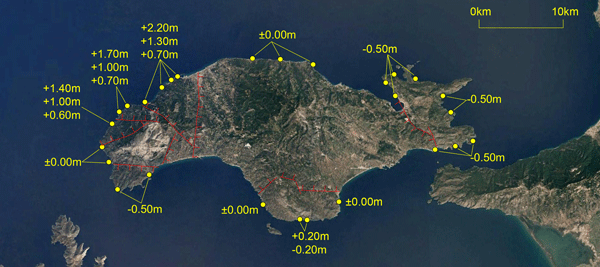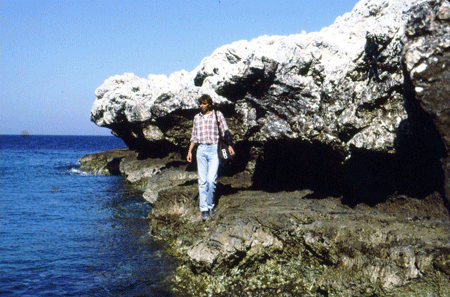30 Oct Co-seismic sea level changes along the coast of Samos (East Aegean)
Mourtzas and Stavropoulos (1989) studied the co-seismic sea level changes along the coast of Samos and the tectonic evolution of the island during the Late Holocene. Based on precise geomorphological sea level change indicators they identified four tectonic blocks with a different tectonic behaviour.
- The north part of the western block uplifted in three tectonic episodes by 2.20 m, 1.30 m and 0.70 m, which gradually decreases towards the west to 1.40 m, 1.0 m and 0.60 m. The south part of the western block subsided by 0.50 m. Two previous subsidence phases of the south part of the western block were identified by two different submerged beachrock generations at -5.70 m and -2.0 m bmsl.
- The south coast of the central part of Samos constitute the second tectonic block, which initially uplifted by 0.20 m and then subsided by 0.40 m.
- The eastern tectonic block has totally subsided by 0.50 m.
- The northern central block remains stable.
The lack of funding in the distant 1989 did not allow us to date the biomaterial we had collected from the uplifted tidal notches and beachrocks. Later, Paolo Pirazzoli and his colleagues (2000) dated it, providing an age of 3598 ± 158 BP for the uppermost uplifted notch, 2621 ± 158 BP for the intermediate and between 948 ± 139 BP and 420 ± 105 BP to the lowermost.
Kolaiti (2019) published the profiles of the uplifted and submerged tidal notches along the coast of Samos Island.










